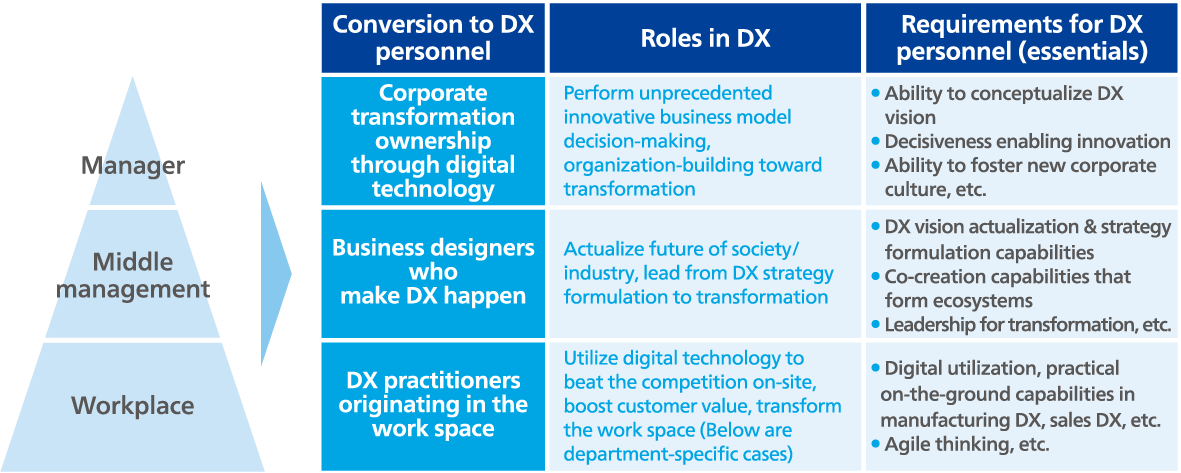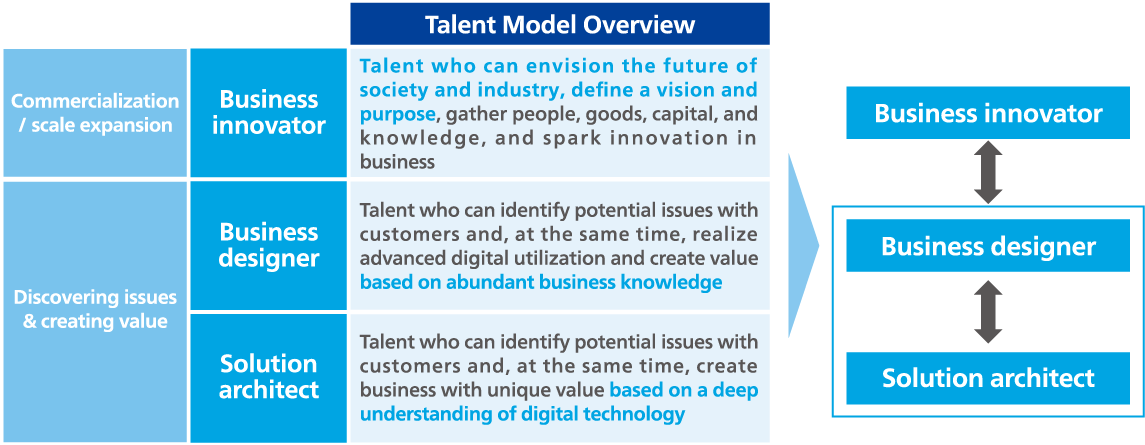(1) Business innovator
Defining a vision and purpose based on a future vision of society and industry is indispensable for business model transformation by DX. A role of sparking innovation in the business by formulating strategies based on a defined vision and purpose is expected. There is a need for talent who can lead this series of processes.
(2) Business designer
Uncovering potential customer issues is essential to transformation into a new business model. There is a need for talent who can examine digital utilization backed by abundant business knowledge and lead value creation.
(3) Solution architect
Following the uncovering of potential customer issues, there is a need for talent who can create businesses with unique value based on deeper knowledge of digital technology than business.
Given the need for close collaboration between the business function and the IT technology function in the execution of a DX strategy, talent who can flexibly switch between the two are crucial. To promote mutual understanding between these functions, talent who can understand IT technology while serving in the business function ((2) above) and talent who can understand business while serving in the IT function ((3) above) are key personnel, and talent who can lead such human resources based on a future concept ((1) above) will promote DX by bringing the different elements together.
It is important to define such DX talent models and start efforts to discover and develop human resources inside and outside the company.




